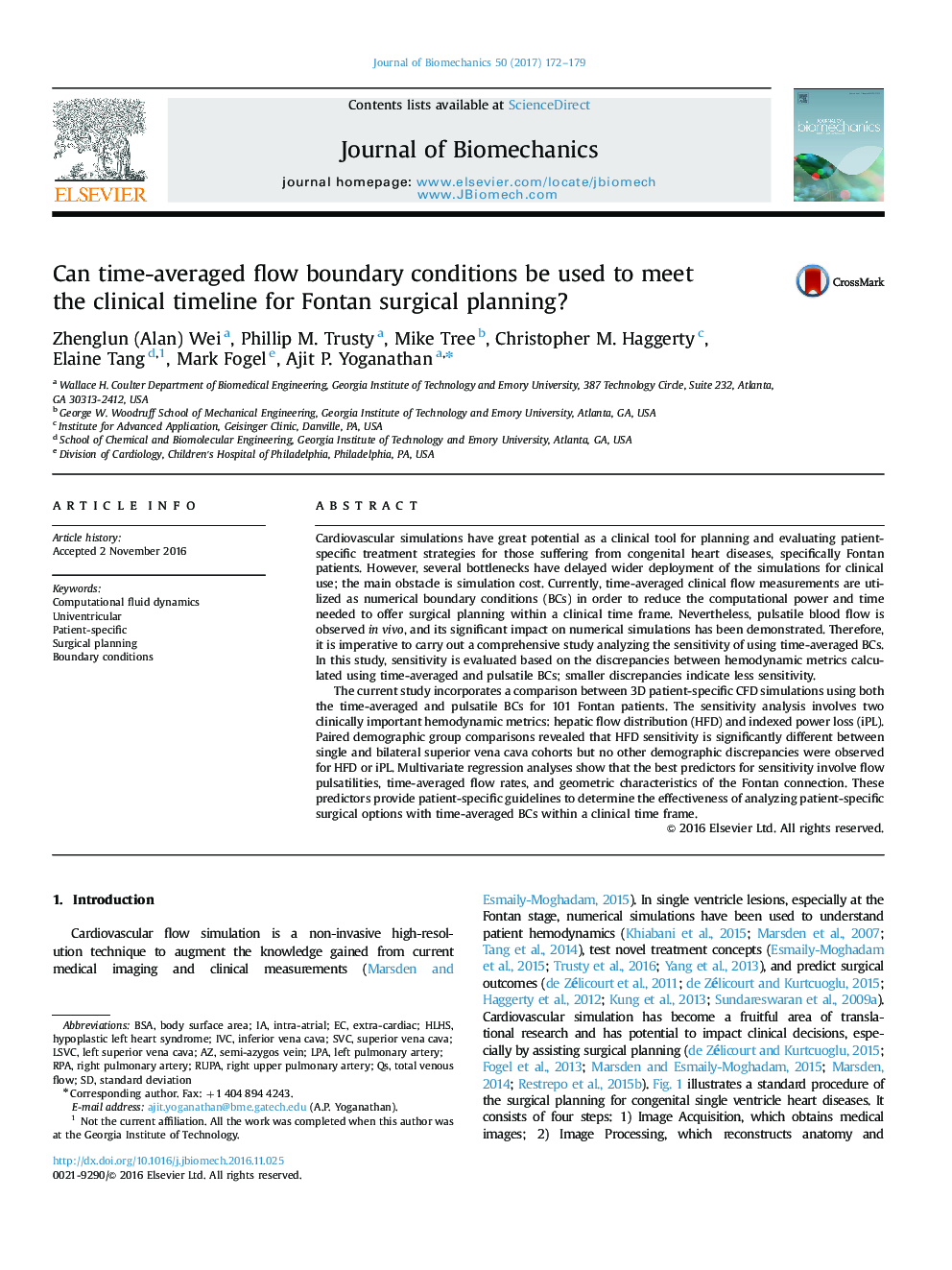| کد مقاله | کد نشریه | سال انتشار | مقاله انگلیسی | نسخه تمام متن |
|---|---|---|---|---|
| 5032146 | 1471114 | 2017 | 8 صفحه PDF | دانلود رایگان |
Cardiovascular simulations have great potential as a clinical tool for planning and evaluating patient-specific treatment strategies for those suffering from congenital heart diseases, specifically Fontan patients. However, several bottlenecks have delayed wider deployment of the simulations for clinical use; the main obstacle is simulation cost. Currently, time-averaged clinical flow measurements are utilized as numerical boundary conditions (BCs) in order to reduce the computational power and time needed to offer surgical planning within a clinical time frame. Nevertheless, pulsatile blood flow is observed in vivo, and its significant impact on numerical simulations has been demonstrated. Therefore, it is imperative to carry out a comprehensive study analyzing the sensitivity of using time-averaged BCs. In this study, sensitivity is evaluated based on the discrepancies between hemodynamic metrics calculated using time-averaged and pulsatile BCs; smaller discrepancies indicate less sensitivity.The current study incorporates a comparison between 3D patient-specific CFD simulations using both the time-averaged and pulsatile BCs for 101 Fontan patients. The sensitivity analysis involves two clinically important hemodynamic metrics: hepatic flow distribution (HFD) and indexed power loss (iPL). Paired demographic group comparisons revealed that HFD sensitivity is significantly different between single and bilateral superior vena cava cohorts but no other demographic discrepancies were observed for HFD or iPL. Multivariate regression analyses show that the best predictors for sensitivity involve flow pulsatilities, time-averaged flow rates, and geometric characteristics of the Fontan connection. These predictors provide patient-specific guidelines to determine the effectiveness of analyzing patient-specific surgical options with time-averaged BCs within a clinical time frame.
Journal: Journal of Biomechanics - Volume 50, 4 January 2017, Pages 172-179
